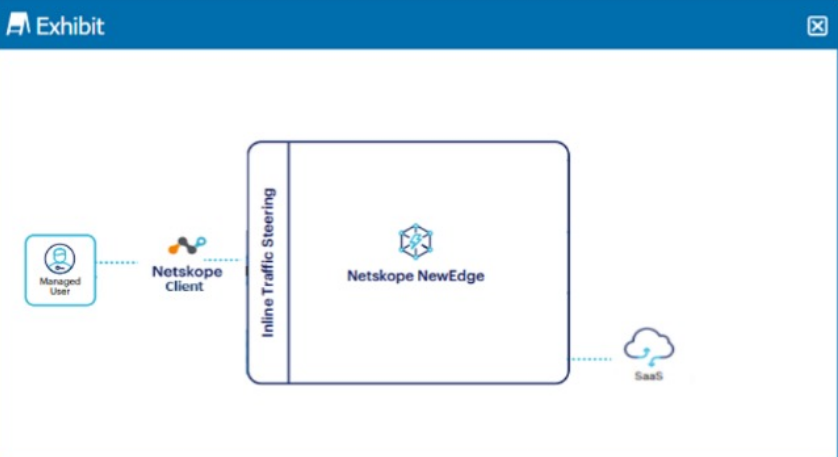At ValidExamDumps, we consistently monitor updates to the Netskope NSK101 exam questions by Netskope. Whenever our team identifies changes in the exam questions,exam objectives, exam focus areas or in exam requirements, We immediately update our exam questions for both PDF and online practice exams. This commitment ensures our customers always have access to the most current and accurate questions. By preparing with these actual questions, our customers can successfully pass the Netskope Certified Cloud Security Administrator Exam exam on their first attempt without needing additional materials or study guides.
Other certification materials providers often include outdated or removed questions by Netskope in their Netskope NSK101 exam. These outdated questions lead to customers failing their Netskope Certified Cloud Security Administrator Exam exam. In contrast, we ensure our questions bank includes only precise and up-to-date questions, guaranteeing their presence in your actual exam. Our main priority is your success in the Netskope NSK101 exam, not profiting from selling obsolete exam questions in PDF or Online Practice Test.
How do you protect your data at rest intellectual property (IP), such as source code or product designs, stored in Microsoft 365 SharePoint?
Protecting Data at Rest in SharePoint:
Protecting intellectual property stored in Microsoft 365 SharePoint requires a solution that can monitor and control data access and usage.
Netskope's API-enabled Protection integrates directly with Microsoft 365 to provide comprehensive security for data at rest.
API-enabled Protection:
Netskope's API-enabled Protection allows direct integration with SharePoint, enabling continuous monitoring and enforcement of security policies.
It ensures that data such as source code or product designs are protected from unauthorized access and potential data breaches.
Configuration:
Configure API-enabled Protection by navigating to the Netskope admin console.
Set up the necessary API integrations with Microsoft 365 SharePoint.
Define security policies to monitor and control access to sensitive data stored in SharePoint.
Reference:
For more details on setting up and configuring API-enabled Protection for SharePoint, refer to the Netskope documentation on API-enabled protection solutions.
You have applied a DLP Profile to block all Personally Identifiable Information data uploads to Microsoft 365 OneDrive. DLP Alerts are not displayed and no OneDrive-related activities are displayed in the Skope IT App Events table.
In this scenario, what are two possible reasons for this issue? (Choose two.)
: https://www.bsimm.com/ : https://www.iso.org/isoiec-27001-information-security.html : https://www.dasca.org/ : https://www.nist.gov/cyberframework
What is the limitation of using a legacy proxy compared to Netskope's solution?
A limitation of using a legacy proxy compared to Netskope's solution is that to enforce policies, traffic needs to traverse back through a customer's on-premises security stack. This creates latency, bandwidth, and scalability issues for remote users and cloud applications. Netskope's solution, on the other hand, leverages a cloud-native architecture that provides high-performance and scalable inspection of traffic from any location and device.Reference:[Netskope Architecture Overview]
The Netskope deployment for your organization is deployed in CASB-only mode. You want to view dropbox.com traffic but do not see it when using SkopeIT.
In this scenario, what are two reasons for this problem? (Choose two.)
In a CASB-only deployment of Netskope, there could be several reasons why Dropbox.com traffic is not visible in SkopeIT:
Certificate Pinning:
The Dropbox Web application might be using certificate pinning, which means it only accepts specific certificates for its connections. This can prevent the traffic from being steered to the Netskope tenant because the proxy's certificate might not match the pinned certificate.
Configuration of Dropbox Domains:
If the Dropbox domains are not properly configured to be steered to the Netskope tenant, then the traffic will bypass the Netskope inspection and will not be visible in SkopeIT. Ensuring that the domains are configured correctly is essential for the traffic to be captured and analyzed by Netskope.
'Certificate pinning prevents the interception of traffic by requiring that the presented certificate matches a known good certificate. This can interfere with traffic steering in CASB deployments.'.
'Proper configuration of application domains is necessary to ensure traffic is steered to the Netskope tenant for inspection and visibility.'.
Click the Exhibit button.

A user is connected to a SaaS application through Netskope's Next Gen SWG with SSL inspection enabled. In this scenario, what information is available in SkopeIT? (Choose three.)
In the scenario where a user is connected to a SaaS application through Netskope's Next Gen Secure Web Gateway (SWG) with SSL inspection enabled, the following information is available in SkopeIT:
User activity, CCL: SkopeIT provides detailed logs of user activities, including actions taken within SaaS applications, and uses the Cloud Confidence Level (CCL) to rate the trustworthiness of cloud applications.
Account instance, category: It logs information about the specific instance of the account being accessed and categorizes the type of service or application in use, which helps in identifying the context of the user's activities.
Username, source location: The username of the user accessing the SaaS application and their source location (such as IP address or geographic location) are logged for audit and compliance purposes.
Netskope documentation on SSL inspection and SkopeIT logging.
Detailed configuration guides on using Next Gen SWG and the types of data collected by SkopeIT.